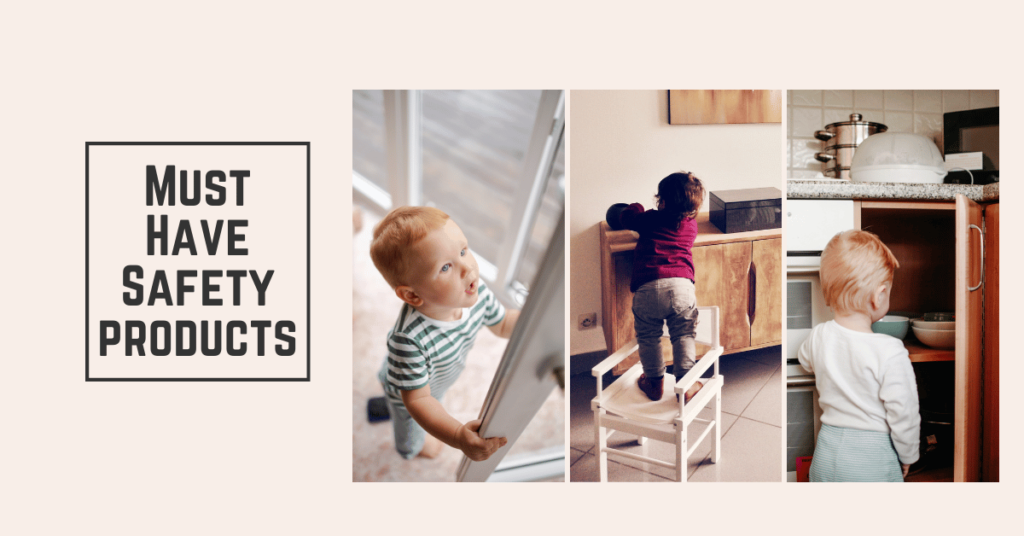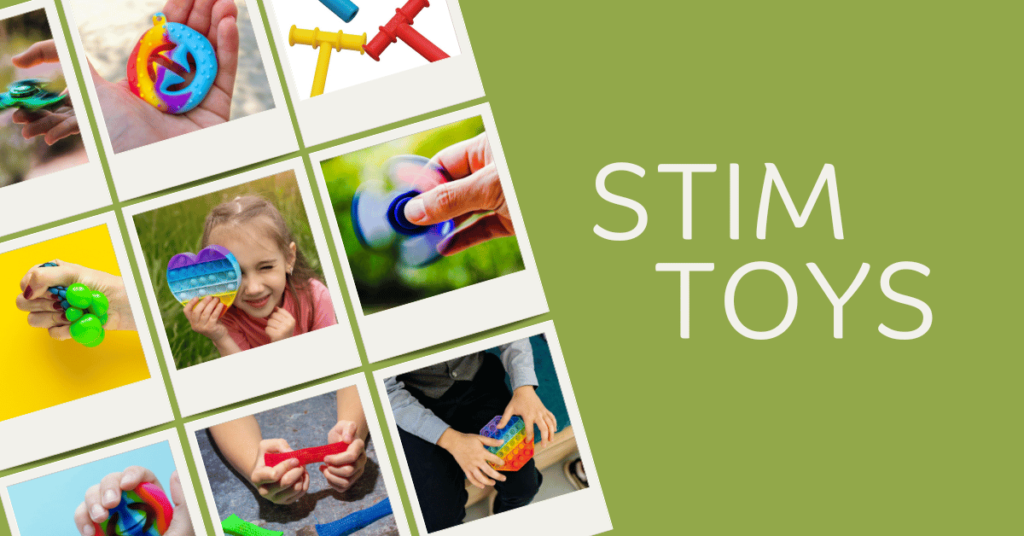Disclosure: This post may contain affiliate links. This means that if you click on a link and make a purchase, we may earn a commission at no additional cost. We only promote products we believe in, and your support helps us continue providing valuable content to our readers.
I. Introduction
Children with special needs encounter unique safety challenges that demand a tailored approach. In this article, we delve into the importance of specialized safety products for autistic children and other special needs. We explore how they can create environments that nurture the growth and well-being of these special stars.
II. Understanding the Safety Challenges Faced by Special Needs Children
Children with special needs navigate a world that may pose unique challenges, requiring a heightened awareness of their safety requirements. Here are the key aspects that shape the safety landscape for these individuals.
Sensory Sensitivities
Children with special needs, like children with autism and sensory processing disorders, often experience heightened sensitivities to stimuli in their environment. Everyday sounds, lights, textures, and even certain smells can be overwhelming. It often leads to anxiety or distress. It can impact a child’s ability to perceive and respond to potential safety hazards.
A child with sensory sensitivities may struggle to filter out excessive stimuli in a crowded or noisy setting. It makes it challenging for them to focus on their surroundings. This heightened sensitivity can affect their perception of danger. It increases the risk of accidents or injuries. Therefore, safety measures need to consider and accommodate these sensory challenges. It is crucial to create environments that promote comfort and security.
Communication Barriers
Communication is a fundamental aspect of safety. It allows individuals to convey their needs, express discomfort, or seek assistance. However, many children with special needs face communication barriers. Some have difficulty expressing themselves verbally. Some need help understanding and interpreting social cues.
In emergencies, the inability to communicate effectively is a significant issue. It may hinder a child’s ability to convey distress or seek help. This lack of communication can pose significant safety risks. Caregivers may struggle to understand the child’s needs. They may have a hard time responding promptly to potential dangers. As a result, safety measures must be designed to address these communication barriers. Providing alternative means for children to express themselves is crucial. They should be able to facilitate effective communication with caregivers.
Tendency to Wander
Wandering is a common concern for parents of children with special needs—particularly those with autism spectrum disorder (ASD). The tendency to wander can stem from a variety of factors. It includes a fascination with certain stimuli or a desire for routine. It may also be an attempt to escape overwhelming situations.
Wandering poses substantial safety risks. Children may unintentionally venture into potentially dangerous environments or situations. From busy streets to bodies of water, the potential hazards are numerous. Understanding and addressing the root causes of wandering is crucial. It is essential for implementing effective preventive measures.
Propensity for Accidents
Children with special needs are often prone to accidents due to a combination of factors. These factors include sensory sensitivities and impaired coordination. It also includes difficulty recognizing or responding to environmental dangers. Everyday scenarios like tripping, falling, or colliding with objects can result in injuries. Caregivers need to be mindful of these tendencies. They need to take proactive measures to minimize potential accident risks. Ensure clutter-free spaces and provide additional support during physical activities. And implement safety measures tailored to the child’s specific needs.
III. The Importance of Specialized Safety Products for Autistic Children and Beyond
Ensuring the safety of children with special needs can be challenging. And the significance of specialized safety products for autistic children and other special needs cannot be overstated. Unlike conventional solutions, these products are purposefully designed. They are designed to cater to the unique challenges kids with diverse abilities face. It goes beyond one-size-fits-all approaches. The importance of specialized safety products lies in their ability to offer tailored features. It enhances the overall safety and well-being of children with special needs.
- Tailored Design for Specific Needs
- Enhanced Accessibility and Usability
- Addressing Sensory Sensitivities
- Fostering Independence and Comfort
- Comprehensive Safety Solutions
IV. Safety at Home
1. Locks and Latches
Locks and latches are versatile safety devices. They are designed to prevent unauthorized access to cabinets, drawers, and appliances and to stop unwanted access to potentially hazardous areas within the home. They ensure children with special needs cannot open or interact with items or spaces that may pose risks.
Pros:
- Available in various types to suit different furniture and spaces.
- It acts as a strong deterrent, especially for children with special needs.
- Generally easy to install, providing an instant safety solution.
Cons:
- Some locks may require additional effort for adults to unlock.
- Continuous use may lead to wear over time, requiring replacements.
Sample Products:
- Safety 1st Adhesive Magnetic Lock System, Child Safety Strap Locks (6 Pack)
2. Door Alarms
Children with special needs may be prone to wandering. This fact is a significant safety concern for parents and caregivers. Door alarms act as proactive measures, alerting caregivers when a door is opened.
Different Types of Door Alarms
a. Wireless Door Alarms
Wireless door alarms provide a convenient solution with easy installation. It eliminates the need for complex wiring. This user-friendly system enhances safety without the hassle.

Pros:
- They are known for hassle-free installation. Great for caregivers with minimal technical expertise.
- It is designed for versatility. These alarms offer flexibility in placement. It allows caregivers to adapt them to various door types and configurations effortlessly.
Cons:
- They may have a limited range depending on the wireless technology used.
b. Magnetic Door Alarms
Magnetic door alarms employ advanced sensors that detect changes in magnetic fields. It triggers the alarm when a door is opened. This reliable technology ensures prompt responsiveness.
Pros:
- It has reliable detection using magnetic field changes.
- It has a discreet design seamlessly integrated into the door frame. These alarms maintain aesthetics while providing adequate security.
Cons:
- It may require a precise alignment for optimal performance.
Sample Products:
- Wsdcam Wireless Door Alarm, KERUI Door Window Alarm
c. Smart Door Alarms
Smart door alarms elevate security by connecting to smartphones or central monitoring systems.
It has real-time notifications and remote monitoring capabilities. It provides an advanced level of control and awareness. These alarms seamlessly integrate with smart home ecosystems. It offers a technologically advanced solution to enhance safety.

Pros:
- Advanced connectivity for real-time alerts.
- Remote monitoring capability enhances convenience.
Cons:
- Typically, it is higher in cost compared to traditional alarms.
d. Pressure-activated Door Alarms
Pressure-activated door alarms respond promptly when pressure is applied to the door, signaling an attempt to open it. This immediate response adds a layer of security against forceful attempts.
Suitable for doors without traditional handles. These alarms provide a versatile solution for various door configurations.
Pros:
- Immediate response to forceful attempts.
- Versatile for various door types.
Cons:
- It may require adjustment for optimal sensitivity.
Sample Products:
- Bunker Hill Security Door/Window Entry Alarm, Doberman Security Ultra-Slim Window Alarm
3. Corner Guards
Corner guards are essential safety accessories. They are designed to protect from accidental bumps and collisions with sharp furniture corners. They act as a cushion, mitigating the impact and reducing the risk of injuries.
Pros:
- Versatile Protection: Guards corners of various furniture types.
- Easy Installation: Typically adhesive-backed for quick and simple attachment.
- Diverse Materials: Available in soft foam, rubber, silicone, and other materials.
- Affordable: Generally cost-effective solutions for enhancing safety.
Cons:
- Visible Appearance: Some may alter the aesthetic of furniture.
- Wear and Tear: Durability can vary, and some guards may need replacement over time.
Sample Products:
- CalMyotis Corner Protector, Sure Basics Clear Corner Guards
4. Safety Gates
Safety gates are for areas in a home that pose specific risks, such as staircases or rooms with potential dangers. The significance of safety gates lies in their ability to restrict access and create secure zones. They prevent children from entering spaces that could be hazardous to their well-being. Safety gates act as reliable barriers, ensuring that vulnerable areas are off-limits. They contribute to an overall safer environment for children with special needs. Discover our comprehensive review of the best safety gates on the market!
Types of Safety Gates
a. Pressure-Mounted Gates
It is secured by pressure against the walls. These gates are easy to install and suitable for areas without potential high impact.

Pros:
- Simple installation, ideal for temporary use.
Cons:
- It may not withstand heavy impact. It is not suitable for the top of the stairs.
b. Hardware-Mounted Gates:
It is installed with screws for a more permanent and secure fit. This feature makes them suitable for high-traffic areas and staircases.
Pros:
- Sturdy and secure, suitable for the top of stairs.
Cons:
- Installation requires tools and may leave marks on walls.
Sample Products:
- Summer Multi-Use Decorative Extra Tall Walk-Thru Gate. Regalo 2-in-1 Extra Wide Stairway and Hallway Walk-Through Gate
c. Retractable Gates
These gates operate on a retractable system, providing a flexible and discreet option.
Pros:
- It can be easily opened and closed and retracts neatly when not in use.
Cons:
- It may have a higher cost, and installation can be more complex.
Sample Products:
- Retract-A-Gate Safety Gate, Dreambaby Retractable Gate
d. Swing Through Gates
These gates swing open like doors, providing a broad and convenient opening.
Pros:
- Easy to use, suitable for wider openings.
Cons:
- Requires sufficient space for swinging; may not be suitable for tight spaces.
Sample Products:
- Regalo Easy Swing & Lock Baby Gate, Summer Multi-Use Decorative Extra Tall Walk-Thru Gate
5. Outlet Covers
Children with special needs, in their exploration and curiosity, may be drawn to electrical outlets. Outlet covers serve as protective barriers. It ensures that curious fingers or objects cannot access the potentially dangerous electrical outlets.
It significantly reduces the risk of electrical accidents. It contributes to a more secure environment for children with special needs.
Pros:
- Outlet covers are generally cost-effective and widely accessible.
- Simple and quick to install, requiring no special tools.
- Available in various designs to match different outlet types.
Cons:
- Small sizes may make them prone to misplacement.
- It may be inconvenient, requiring extra effort for adults to remove when needed.
Sample Products:
- Safety 1st Outlet Cover with Cord Shortener, Mommy’s Helper Outlet Plugs
V. Safety on the Move
1. Tracking Devices
Tracking devices utilize advanced technology to provide caregivers with real-time updates on the location of a child. These devices are designed to be compact, wearable, or attachable to personal items.
It allows caregivers to anticipate and respond to their child’s movements. It helps ensure a proactive approach to safety, both within and outside the home.
Types of Tracking Devices
a. GPS Trackers
These devices utilize Global Positioning System (GPS) technology. It provides accurate and real-time location information. They are compact and can be attached to clothing, worn as wearables, or placed in personal items.
Pros:
- Accurate location tracking, real-time updates, and some may include features like geo-fencing.
Cons:
- It may require a subscription for continuous services, and battery life can vary.
Sample Products:
- AngelSense GPS Tracker, Veriot Venture Smart GPS Tracker, Tracki Mini GPS Tracker
b. Cellular Trackers
Cellular trackers use cellular networks to transmit location data. They are often compact and can be worn or carried by the child.
Pros:
- It has wide-area coverage and real-time tracking capabilities.
Cons:
- It may require a cellular service plan. It has the potential for ongoing subscription fees. Take also into consideration battery life.
Sample Products
- TickTalk 4 Kids Smart Watch Phone, Relay Kids Screenless Smartphone
c. Wearable Trackers
They are integrated into wearable devices such as smartwatches or bracelets. These devices often combine tracking features with additional functionalities.
Pros:
- Convenient, versatile, and may offer additional health or safety features.
Cons:
- It is costlier than some standalone tracking devices. It may require regular charging.
Sample Products
- Tinitell Kids Wearable Phone, Dynotag Smart Kids ID Bracelet
2. Specialized Car Seats
Specialized car seats take safety to the next level. It considers the unique challenges faced by children with special needs.
These car seats provide additional support, comfort, and safety features. They cater to a variety of special needs. It thus ensures a secure and comfortable travel experience. While these seats may have a higher price tag, their enhanced safety and tailored support can be invaluable.

Pros:
- Specialized car seats go beyond standard designs, offering tailored support based on the child’s needs.
- These seats are equipped with additional safety features to address specific challenges faced by children with special requirements.
- With a focus on inclusivity, specialized car seats aim to accommodate a diverse range of physical and developmental needs.
Cons:
- Pricey and may come in a heavier or bulkier design
Sample Products:
- Convaid Carrot 3 Special Needs Car Seat, Snug Seat Pilot Special Needs Car Seat
VI. Communication and Sensory Safety
1. Identification Bracelets
Identification bracelets emerge as indispensable tools during emergencies. They carry critical information that can be instrumental in ensuring a child’s safety and well-being. They are used to provide contact information and convey vital medical details. These bracelets become silent guardians that speak volumes when words may fail. They serve as a crucial link between a child and the necessary assistance in times of crisis.
Pros:
- It carries customizable information. It can include a child’s name and emergency contact numbers. You can also add medical conditions and allergy information.
- It comes in various designs to suit different preferences and comfort levels.
- Ease of access and instant recognition. In emergencies, first responders can quickly recognize and access information. They can facilitate prompt and informed action.
Cons:
- Regular updates may be necessary to ensure the information is current.
- Bracelets may be removed or misplaced, requiring regular checks and reminders.
Sample Products:
- Road ID Medical Alert Bracelet, My Identity Doctor Custom Engraved Bracelet, Vital ID Wristband with QR Code
2. Noise-Canceling Headphones
For children with sensory sensitivities, navigating loud and chaotic environments can be overwhelming. Noise-canceling headphones reduce or eliminate external sounds.
The headphones offer a respite from auditory stimuli that may trigger anxiety or discomfort. They create a comfort zone for special needs children. It allows them to engage with their surroundings without the stress of overwhelming noise.

Pros:
- Most have adjustable noise cancellation. Many noise-canceling headphones allow users to adjust the level of noise cancellation based on their comfort preferences.
- The headphones often feature soft and cushioned ear cups for added comfort during extended wear.
- They are wireless and portable. They are easy to carry, suitable for various environments, and eliminate the risk of entanglement.
Cons:
- Some designs may be bulkier than standard headphones.
- Requires regular charging
Sample Products:
- Mpow 059 Bluetooth Headphones. Bose QuietComfort 45 Product Review
VII. Conclusion: Embracing Safety for Our Special Stars
Safeguarding children with special needs involves a deliberate and thoughtful approach. Specialized safety products for autistic children and other special needs serve as invaluable tools. They create environments that nurture their growth and well-being. Addressing unique challenges and incorporating these must-have safety products are essential. We empower parents to provide the utmost care for their special stars through it.
VII. Frequently Asked Questions
Are safety products specifically designed for children with special needs necessary?
Absolutely. Given these children’s unique challenges, specialized safety products are tailored to their needs. It helps ensure a secure environment.
How can I choose the right safety products for my child’s unique needs?
Consider your child’s requirements. Seek products with adjustable features. Consult with professionals or support groups for personalized recommendations.
Are there any government regulations regarding safety products for children with special needs?
Yes, various safety products are subject to regulations. It’s crucial to ensure compliance with safety standards. Consider reputable brands that adhere to these regulations.
Can I use mainstream safety products for my child with special needs?
Some mainstream products may be suitable for some children with special needs. It is still advisable to prioritize those specifically designed for special needs children. They often offer features catering to the unique challenges faced by these children.
What precautions should be taken for ASD?
Autism Spectrum Disorder (ASD) requires thoughtful consideration of the unique needs of individuals. Precautions may include:
- Sensory Considerations: Create a sensory-friendly environment with minimal stimuli.
- Communication Strategies: Establish clear and consistent communication methods.
- Structured Routine: Maintain a predictable routine to provide a sense of security.
- Safety Measures: Implement safety products, such as identification bracelets, and consider sensory tools like noise-canceling headphones.
How can I prepare my special child for emergencies?
Preparing a child with special needs for emergencies involves:
- Practice Drills: Conduct regular emergency drills.
- Visual Supports: Use visual supports to explain emergency procedures.
- Identification: Ensure your child wears an identification bracelet with emergency contacts.
- Communication Plan: Establish a clear communication plan for emergencies.



